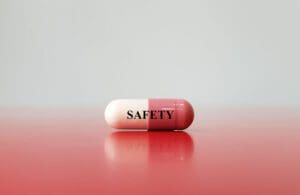
[Image courtesy of Sittithat Tangwitthayaphum via iStock]
Pharmacovigilance is the backbone of pharmaceutical manufacturing. Without it, there would be no way to compare the efficacy of pharmaceuticals to their detrimental consequences. Pharmacovigilance, or PV, is intended to safeguard patients and enable the spread of knowledge among experts to reduce the risk of adverse events.
According to Future Market Insights, the global Pharmacovigilance market is anticipated to grow with a robust CAGR of 14% from 2022 to 2032. Rapid pharmacological advancement in drug discovery in recent years has resulted in the formation of several institutional-level research and development projects, culminating in clinical trials with highly decisive outcomes. Furthermore, increased hospital admissions for various disorders are forcing healthcare facilities to streamline their procedures. As a result, the scope of pharmacovigilance services has greatly expanded.
As the number of pharmaceutical companies striving to introduce successful drug candidates grows, so does the level of competition. Extensive collaborations and partnerships to speed the discovery of new molecules has increased demand for more robust R&D activities and streamlined workflows, prompting corporations to invest in pharmacovigilance solutions. This calls for the adoption of various technologies in this domain.
In this blog, we will discuss how AI and supercomputing can be used in the field of pharmacovigilance to enhance medical drug discovery and design, the role of quantum computing in the field of pharmacovigilance, and how the US FDA is controlling the various over the counter sales of drugs and other drugs that are not legal to be sold; hence maintaining the safety and security of the drugs.
Supercomputing along with AI can enhance the drug safety
Supercomputers outperform general-purpose computers in speed and performance, which are beneficial for completing scientific and data-intensive activities. It seems to reason that researchers are attempting to apply supercomputing to the time-consuming process of drug discovery and design.
For instance, NVIDIA, a US technology corporation, launched Cambridge-1, the UK’s most powerful supercomputer, in December 2021 to assist British healthcare researchers in addressing some of the industry’s most pressing healthcare concerns. Along with the release of Cambridge-1, NVIDIA announced several collaborations with pharmaceutical giants AstraZeneca and GlaxoSmithKline, as well as institutions such as Guy’s and St Thomas’ NHS Foundation Trust, King’s College London and Oxford Nanopore Technologies to enhance the pharmacovigilance solutions.
NVIDIA and AstraZeneca are cooperating to develop a transformer-based generative AI model for chemical components, enabling researchers to use enormous datasets using self-supervised training approaches and supporting speedier drug discovery.
Molecular simulations can also be used to thoroughly model target and drug interactions in silico. For example, the discoveries of AlphaFold and RoseTTAFold, which resulted in a thousand-fold increase in known protein structures, and AI, which can generate a thousand more new chemical compounds, have multiplied the opportunity to discover medications by a million.
To assist application developers in industrializing their AI technology and expanding the application’s business value, AI must be taught and validated on data not owned by their group, institution or area.
Federated learning is critical for enabling such collaboration to construct and verify robust AI models without disclosing sensitive data. Furthermore, Federated learning will be crucial for AI’s continual learning and evaluation. For healthcare, this entails drug discovery by functional regulation of biomolecular systems and integrated computational life science to aid in creating personalized and preventative medicine, hence improving the overall area of pharmacovigilance.
Quantum computing — a new feature in the pharmacovigilance solutions for drug discovery
Computational methods for drug discovery are not new, but using ultra-efficient quantum computers to uncover previously unknown molecules has only lately surfaced as a promising area.
While traditional computers employ “bits” that are either on or off, quantum computers use “qubits” that can be on, off or both – a phenomenon known as superposition. This superposition property enables quantum computers to significantly accelerate and refine testing and projections, making the technology particularly attractive for drug discovery efforts.
Quantum Brilliance is an Australian-German firm to makes quantum-powered drug discovery a fact. The start-up, founded in 2019, is working on diamond quantum accelerators that can mimic interactions between numerous molecules for in silico drug development and creation.
As part of their software stack, their goal for 2022 is to show the notion and benefit of distributed quantum computing (QC) for computational chemistry. While QC is still in its inception stage, industry participants have recognized its potential to revolutionize medical research – and the recent wave of collaborations between QC groups and large drug companies demonstrate that the pharma business is eager to get involved.
Boehringer Ingelheim announced a collaboration with Google Quantum AI in January 2022 to use quantum technologies for drug design and in silico modeling. A month later, the pharmaceutical company Roche announced a collaboration with Cambridge Quantum Computing to speed the development of early-stage Alzheimer’s disease medicines.
SEEQC, a digital quality assurance organization, revealed in November 2021 that its UK-based team had been given a £6.85m grant from the country’s government agency Innovate UK. SEEQC will use the cash to create and deliver a full-stack quantum computer for drug development by German giant Merck KgaA.
As a result, the demonstration of quantum usefulness – defined as a quantum system outperforming classical processors of equal size, weight, and power in similar surroundings – could be helpful in the development of new drug materials and pharmacovigilance solutions.
Post-Market Drug Safety Monitoring — an initiative taken up by the US FDA
Although clinical trials provide valuable information regarding a drug’s efficacy and safety, they are unlikely to provide complete information about a drug’s safety at the time of approval. Despite the rigorous procedures in the medication development process, there are limitations. As a result, the accurate picture of a product’s safety changes during the months and even years that a product spends on the market. When the FDA receives reports of difficulties with prescription and over-the-counter pharmaceuticals, it may opt to add cautions related to the dosage or usage information, as well as take further steps in the case of more serious issues. This can improve the system of pharmacovigilance for the safety of the drugs.
FDA officials monitor drug production facilities across the United States and internationally to determine if approved medications are made there. Manufacturers may be notified in advance of inspections, or the inspections may occur unexpectedly. On the other hand, inspections might be routine or prompted by a specific problem or concern. These inspections aim to ensure that developers are adhering to best manufacturing practices. If minimum requirements are not reached, the FDA has the authority to close a facility.
When a new drug is approved for marketing, it is patent protected. Therefore, only the sponsor has the sole right to market the medicine. When the patent on the drug expires, other drug makers can create a generic version of the drug.
Since generic pharmaceuticals are interchangeable with existing drugs, generic drug producers are not required to undergo clinical trials to verify that their product is safe and effective. Instead, they perform bioequivalence studies and submit an Abbreviated New Drug Application.
The FDA has numerous initiatives that allow producers, health professionals, and consumers to report issues with approved pharmaceuticals. MedWatch, for example, is a portal for reporting problems with medical products (drugs and equipment) and learning about new safety information. MedWatch receives public reports and, when necessary, issues safety alerts for FDA-regulated items such as prescription and over-the-counter medications, medical devices such as hearing aids, breast pumps, and pacemakers, biologics like blood components, blood/plasma derivatives, and gene therapies. These products use several reporting paths, and it is advised that reports about these products be filed directly to the relevant portals. Thus, with all these initiatives, pharmacovigilance can be made more strict for the safety and enhanced function of the drugs.
Conclusion
Traditionally, pharmaceutical corporations have had complete control over the development and distribution of product information. However, rapid invention and acceptance of consumer health technologies such as wearables, sensors and digital services have reduced this control.
The utilization of digital technologies allows pharma businesses to significantly improve the efficiency, speed, and quality of pharmacovigilance programs.
The confluence of patient-generated health data, information held by healthcare providers, and machine learning models allows medicines to generate novel insights at an unimaginable pace and scale. These insights extend beyond drug safety and efficacy to quality of life measures that can help with pharmacovigilance enhancements.
The current usage of various siloed information systems by pharmaceutical companies to process safety data may impede many of them from reaching this intended future condition. For example, several internal pharmacovigilance groups review safety data from external sources in various ways and for various goals; each group may pull and analyze data from as many as a dozen disparate systems, yielding many versions of the truth.
An end-to-end, modular “learning loop” system that uses a unified data platform and automation to cognitively process upstream and downstream safety information and leverage continual learning to help mitigate risk, strengthen compliance, and improve patient outcomes is one approach to breaking the case processing cost curve while also enhancing the role of sending signals.
Thus, to capitalize on this opportunity, pharmaceutical companies will need a new digital infrastructure to collect and integrate this patient-generated health data at scale while maintaining patient consent.

Sabyasachi Ghosh
Sabyasachi Ghosh is associate vice president (AVP), market research at Future Market Insights (FMI), and a Greater New York Chamber of Commerce member. The award-winning firm is headquartered in Dubai. It also has offices in the United States, United Kingdom and India. MarketNgage is the Market Research Subscription Platform from FMI that assists stakeholders in obtaining in-depth research across industries, markets and niche segments. You can connect with Sabyasachi on LinkedIn.